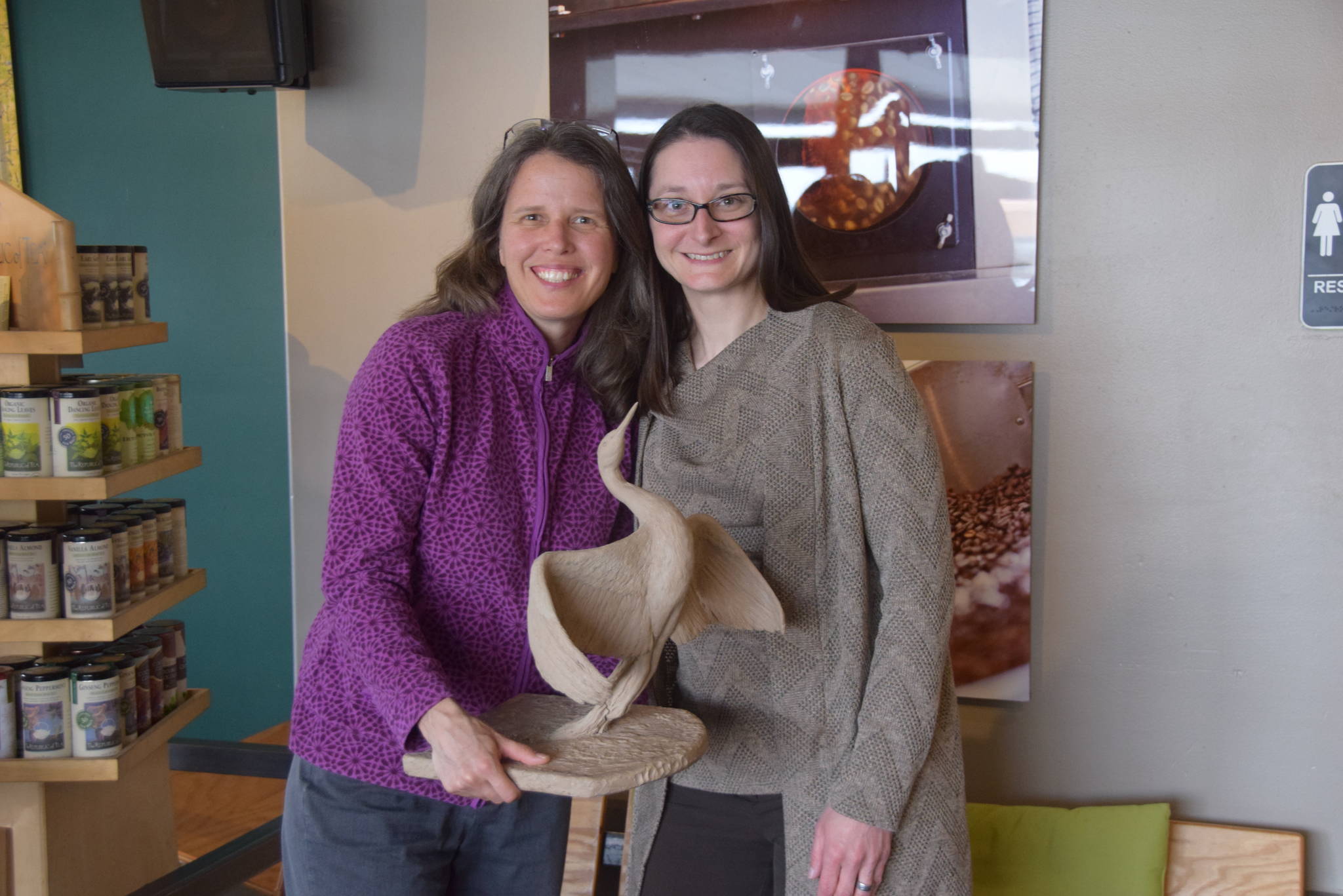This Saturday, peninsula residents will have the opportunity to make their mark on the history of Kenai — literally. A 6-foot-tall sandhill crane statue is currently being sculpted by local artist Christina Demetro, and she will be bringing the statue to the Kenai and Soldotna libraries on Saturday so that anyone who is interested can collaborate on the sculpture by adding clay to the wings and head of the bird. People will also have the opportunity to write haikus, some of which will be included on the finished product. That Peace Crane statue will eventually be cast in bronze and placed in the Shimai Toshi Garden Trails, a Japanese Garden that will be the first of its kind in Alaska.
The Shimai Toshi Garden Trails is a proposed Japanese garden that sprung from a story of resiliency. Sarah Pyhala, the president of the Shimai Toshi Garden group, said that the idea first came to her and her husband Matthew in February of 2018. While attending a Rotary conference on environmental sustainability, Pyhala learned of an organization that harvests seeds collected from plants that survived the 1945 atomic bombing of Hiroshima, Japan. Pyhala was able to obtain ginkgo and hackberry seeds, and as of now she has managed to get one of the ginkgo trees and three hackberry trees to sprout. The trees where the seeds came from were less than 1,200 meters from ground zero of the atomic bomb, but have managed to survive to this day.
After acquiring the seeds, Pyhala began looking at possible locations for a Japanese garden in Kenai. While not officially part of the Sister City Program that connects Kenai with Akita, Japan, Pyhala wanted to formally recognize the relationship with a public garden — Shimai Toshi is Japanese for “sister city” — while also providing a therapeutic space for people on the peninsula. The ginkgo, hackberry and newly acquired persimmon plants that are currently under grow lights at Pyhala’s house will be planted in the garden along with other native Alaskan plants.
Pyhala hasn’t found the perfect spot yet, but she is hopeful that by September her group will have the location for their garden. In the meantime, Pyhala reached out to the artist responsible for “The Giving Salmon” sculpture in Homer to sculpt a crane that would be the centerpiece for the garden. As it turns out, Demetro had been thinking of sculpting a crane before she got the call.
“When I envisioned the garden, I always pictured a crane sculpture, either in-flight or with its wings expanded,” Pyhala said. “When I contacted Christina, she told me that the day before she had just been reviewing her crane and heron ideas from 20 years ago.” With that, a new partnership had taken flight.
Demetro has been doing sculpture work since she was 19 apprenticing with her father. As she grew up Demetro began working on her own pieces, but she continues to co-sculpt with her father to this day. Both Demetro and her father have always emphasized involving the community in co-sculpting the pieces that will be publicly displayed, including “The Giving Salmon.” For that piece, Demetro said over 300 community members and students co-sculpted the 6-foot salmon with her, and it is now on display near the Salty Dog Saloon in Homer.
“When you have ownership in the artwork, you see it and appreciate it in a different way,” Demetro said. “It has a different energy to it.”
This spring Demetro has been traveling to schools around the peninsula and involving students in the sculpting of the crane as well as teaching them how to create their own sculptures, write haikus and play the giant xylophone that will be placed in the center of the statue, encompassed by the wings of the crane.
Pyhala has a background as a therapist and said that spending time in Japanese gardens has been shown to improve the quality of life for people struggling with dementia, PTSD and other illnesses. Described by Pyhala as “structured chaos,” Japanese gardens utilize plant height, plant placement and geometry to tell a story by drawing the eye to various points while walking through the garden.
“With the space that we have in mind, people will be able to just get lost in their thoughts.
After collaborating with community members on Saturday, Demetro hopes to have the statue finished by this fall so that she can send it off to Arctic Fires Bronze Sculptureworks in Palmer.
Demetro said that no artistic skill is necessary to participate in Saturday’s co-sculpting and everyone is invited. Pyhala found that working with the clay and hearing the story of the trees that survived an atomic blast has inspired others to share their stories of resiliency.
The statue will be at the Kenai Library from 9:30 a.m. to 12 p.m. on Saturday and at the Soldotna Library from 2 to 5 p.m.

